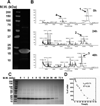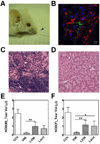A thermo-responsive protein treatment for dry eyes
- PMID: 25481446
- PMCID: PMC4456095
- DOI: 10.1016/j.jconrel.2014.11.016
A thermo-responsive protein treatment for dry eyes
Abstract
Millions of Americans suffer from dry eye disease, and there are few effective therapies capable of treating these patients. A decade ago, an abundant protein component of human tears was discovered and named lacritin (Lacrt). Lacrt has prosecretory activity in the lacrimal gland and mitogenic activity at the corneal epithelium. Similar to other proteins placed on the ocular surface, the durability of its effect is limited by rapid tear turnover. Motivated by the rationale that a thermo-responsive coacervate containing Lacrt would have better retention upon administration, we have constructed and tested the activity of a thermo-responsive Lacrt fused to an elastin-like polypeptide (ELP). Inspired from the human tropoelastin protein, ELP protein polymers reversibly phase separate into viscous coacervates above a tunable transition temperature. This fusion construct exhibited the prosecretory function of native Lacrt as illustrated by its ability to stimulate β-hexosaminidase secretion from primary rabbit lacrimal gland acinar cells. It also increased tear secretion from non-obese diabetic (NOD) mice, a model of autoimmune dacryoadenitis, when administered via intra-lacrimal injection. Lacrt ELP fusion proteins undergo temperature-mediated assembly to form a depot inside the lacrimal gland. We propose that these Lacrt ELP fusion proteins represent a potential therapy for dry eye disease and the strategy of ELP-mediated phase separation may have applicability to other diseases of the ocular surface.
Keywords: Elastin-like polypeptides (ELPs); Lacrimal gland; Lacritin; Prosecretory; Thermo-responsive; Uptake.
Copyright © 2014 Elsevier B.V. All rights reserved.
Figures






Similar articles
-
Lacrimal histopathology and ocular surface disease in a rabbit model of autoimmune dacryoadenitis.Cornea. 2003 Jan;22(1):25-32. doi: 10.1097/00003226-200301000-00007. Cornea. 2003. PMID: 12502944
-
Tear-mediated delivery of nanoparticles through transcytosis of the lacrimal gland.J Control Release. 2015 Jun 28;208:2-13. doi: 10.1016/j.jconrel.2014.12.017. Epub 2014 Dec 16. J Control Release. 2015. PMID: 25523518 Free PMC article.
-
A rapamycin-binding protein polymer nanoparticle shows potent therapeutic activity in suppressing autoimmune dacryoadenitis in a mouse model of Sjögren's syndrome.J Control Release. 2013 Nov 10;171(3):269-79. doi: 10.1016/j.jconrel.2013.07.016. Epub 2013 Jul 25. J Control Release. 2013. PMID: 23892265 Free PMC article.
-
Lacritin and other new proteins of the lacrimal functional unit.Exp Eye Res. 2009 May;88(5):848-58. doi: 10.1016/j.exer.2008.09.002. Epub 2008 Sep 18. Exp Eye Res. 2009. PMID: 18840430 Free PMC article. Review.
-
Is the main lacrimal gland indispensable? Contributions of the corneal and conjunctival epithelia.Surv Ophthalmol. 2016 Sep-Oct;61(5):616-27. doi: 10.1016/j.survophthal.2016.02.006. Epub 2016 Mar 9. Surv Ophthalmol. 2016. PMID: 26968256 Review.
Cited by
-
Autophagy in the normal and diseased cornea.Exp Eye Res. 2022 Dec;225:109274. doi: 10.1016/j.exer.2022.109274. Epub 2022 Oct 14. Exp Eye Res. 2022. PMID: 36252655 Free PMC article. Review.
-
Lacritin and other autophagy associated proteins in ocular surface health.Exp Eye Res. 2016 Mar;144:4-13. doi: 10.1016/j.exer.2015.08.015. Epub 2015 Aug 25. Exp Eye Res. 2016. PMID: 26318608 Free PMC article. Review.
-
Lacritin proteoforms prevent tear film collapse and maintain epithelial homeostasis.J Biol Chem. 2021 Jan-Jun;296:100070. doi: 10.1074/jbc.RA120.015833. Epub 2020 Nov 21. J Biol Chem. 2021. PMID: 33187980 Free PMC article.
-
Steric stabilization of bioactive nanoparticles using elastin-like polypeptides.Adv Drug Deliv Rev. 2024 Mar;206:115189. doi: 10.1016/j.addr.2024.115189. Epub 2024 Jan 26. Adv Drug Deliv Rev. 2024. PMID: 38281625 Free PMC article. Review.
-
Molecular Size Modulates Pharmacokinetics, Biodistribution, and Renal Deposition of the Drug Delivery Biopolymer Elastin-like Polypeptide.Sci Rep. 2018 May 21;8(1):7923. doi: 10.1038/s41598-018-24897-9. Sci Rep. 2018. PMID: 29784932 Free PMC article.
References
-
- Friedman NJ. Impact of dry eye disease and treatment on quality of life. Current opinion in ophthalmology. 2010;21:310–316. - PubMed
-
- Stern ME, Beuerman RW, Fox RI, Gao JP, Mircheff AK, Pflugfelder SC. The pathology of dry eye: The interaction between the ocular surface and lacrimal glands. Cornea. 1998;17:584–589. - PubMed
Publication types
MeSH terms
Substances
Grants and funding
LinkOut - more resources
Full Text Sources
Other Literature Sources
Molecular Biology Databases

